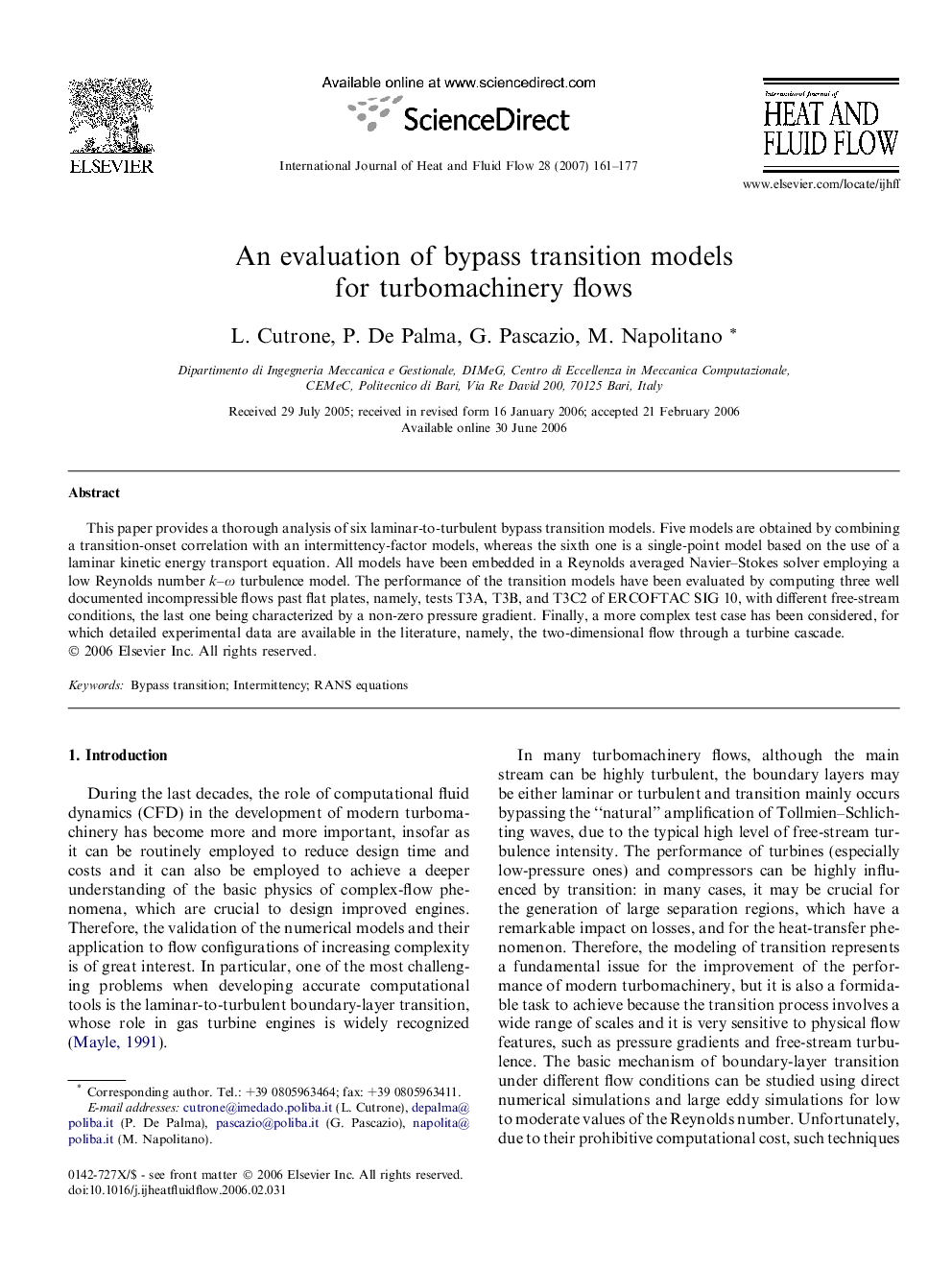| Article ID | Journal | Published Year | Pages | File Type |
|---|---|---|---|---|
| 655781 | International Journal of Heat and Fluid Flow | 2007 | 17 Pages |
Abstract
This paper provides a thorough analysis of six laminar-to-turbulent bypass transition models. Five models are obtained by combining a transition-onset correlation with an intermittency-factor models, whereas the sixth one is a single-point model based on the use of a laminar kinetic energy transport equation. All models have been embedded in a Reynolds averaged Navier-Stokes solver employing a low Reynolds number k-Ï turbulence model. The performance of the transition models have been evaluated by computing three well documented incompressible flows past flat plates, namely, tests T3A, T3B, and T3C2 of ERCOFTAC SIG 10, with different free-stream conditions, the last one being characterized by a non-zero pressure gradient. Finally, a more complex test case has been considered, for which detailed experimental data are available in the literature, namely, the two-dimensional flow through a turbine cascade.
Related Topics
Physical Sciences and Engineering
Chemical Engineering
Fluid Flow and Transfer Processes
Authors
L. Cutrone, P. De Palma, G. Pascazio, M. Napolitano,
